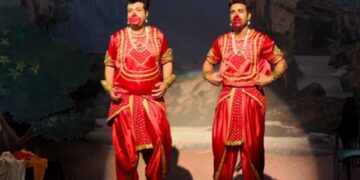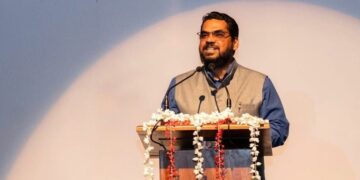Nepal’s pro-monarchist Rastriya Prajatantra Party (RPP) launched a major protest on Tuesday in Balkhu, Kathmandu, calling for the reinstatement of the monarchy and the release of its leaders and supporters detained by police.
Security forces were on high alert following violent clashes during a similar protest on March 28 in the Tinkune area, which left two dead and hundreds injured.
The earlier violence led to the arrest of several pro-monarchy activists, including key figures such as RPP Vice-Chair Rabindra Mishra, General Secretary Dhawal Shumsher Rana, and Nabaraj Subedi, the coordinator of the Joint People’s Movement, who is currently under house arrest.
The Kathmandu District Court recently extended the detention of 39 individuals, including RPP leaders, for further investigation into their involvement in the clashes.
Tuesday’s demonstration, held under the slogan “Let’s change the system to change the situation,” was spearheaded by RPP Chair Rajendra Lingden with support from the Joint People’s Movement.
Over 2,000 Nepal Police personnel were deployed to ensure order during the protest.
While police spokesperson Dinesh Kumar Acharya expressed hopes for a peaceful demonstration, authorities warned of strict action against vandalism or arson.
Tensions have been escalating between the government and royalist groups.
Prime Minister KP Sharma Oli recently warned of legal action against those involved in the March 28 violence, including former King Gyanendra Shah, if found guilty.
Addressing Parliament, Oli criticised RPP lawmakers for undermining the Constitution, prompting protests from the party within the House.
RPP Chair Lingden responded by accusing republican parties of fostering corruption since the monarchy’s abolition in 2008.
ALSO READ: ISRO Chairman pledges support for Assam’s satellite vision
Speaking in Parliament, he claimed security forces used expired tear gas during the Tinkune clashes and demanded the formation of a judicial commission to investigate the incident.
Lingden also warned that public sentiment could potentially overturn Nepal’s republican system.
As the standoff continues, the royalist camp and the government remain locked in a war of words, each blaming the other for the unrest, with the broader question of Nepal’s governance system hanging in the balance.















